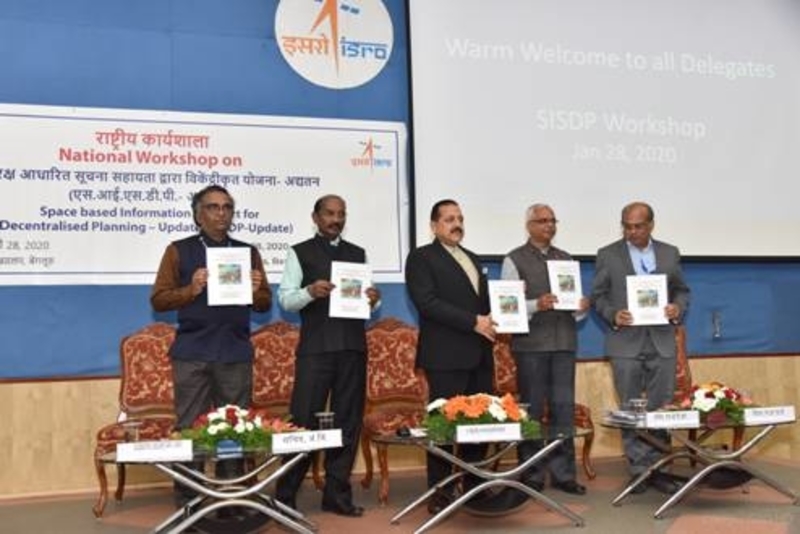
India recently launched the third version of the Bhuvan Panchayat web portal in Bengaluru, earlier this week.
The web portal is an easy-to-use geoportal and will provide database visualisation, data analytics, model-based products or services for village council members and stakeholders, and will generate automatic reports.
For the first time, a thematic database (on a 1:10,000 scale) for the entire country is available with integrated high-resolution satellite data for planning.
The project will last for at least two years. The country’s space agency, the Indian Space Research Organisation (ISRO) developed the portal and will collaborate with village council stakeholders to understand their data requirements.
A national workshop was conducted on the project, which is called the Space-based Information Support for Decentralised Planning (SIS-DP) update.
At the event, a government official said that space technology has contributed to the ease of living for Indian citizens, because of its applications in various fields.
The target audience for this portal is the public, PRIs, and village councils.
A press release noted he claimed that government initiatives have boosted the Indian Space Programme. He also released technical documents about the SIS-DP-Update Project.
ISRO launched the SISDP project to assist village councils at the grassroots level with basic planning inputs derived from satellite data for preparing developmental plans, implementation, and to monitor activities. The first phase of SISDP was concluded in 2016-17.
Based on the experience gained and encouraging feedback received from various stakeholders on phase-I, the SISDP-Update project was initiated to provide value-added geospatial services for development planning.
According to news reports, ISRO will share high-resolution geospatial data it generates from its remote sensing satellites to help planning across rural parts of the country ranging from e-government services to the optimisation of public schools.
Earlier this month, ISRO launched a communication satellite GSAT-30 from the Spaceport in French Guiana. The launch vehicle Ariane 5 VA-251 lifted off from Kourou Launch Base, French Guiana carrying India’s GSAT-30, as scheduled.
According to a press release, after about a 38-minute flight, GSAT-30 separated from the Ariane 5 upper stage in an elliptical geosynchronous transfer orbit.
The satellite has a lift-off mass of 3,357 Kilograms. It will provide continuity to operational services on some of the in-orbit satellites. GSAT-30 is based on ISRO’s earlier INSAT/GSAT satellite series and will replace INSAT-4A in orbit.
The ISRO Chairman noted that GSAT-30 has a unique configuration and will provide flexible frequency segments and coverage. The satellite will enable communication services to the Indian mainland and islands through Ku-band and wide-coverage covering the Gulf countries. Also, a large number of Asian countries and Australia through C-band.
He said that GSAT-30 will provide DTH television services, connectivity to VSATs for ATMs, stock-exchange, television up-linking, teleport services, digital satellite newsgathering (DSNG), and e-governance applications.
The satellite will also be used for bulk data transfer for a host of emerging telecommunication applications.
















